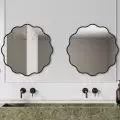How to improve the energy efficiency of a building? In order to reduce energy consumption for heating and cooling a building, consider improving thermal insulation.
Thermal modernization of a building is not just about upgrading the thermal facade, roof or woodwork. It's also about choosing solutions such as skylights, which, in addition to a good heat transfer coefficient, bring evenly diffused light into the building. Thanks to such a solution, the comfort of work and the productivity of employees is increased. Thus, the frequency of employee absenteeism is reduced, and the cost of improving the quality of the indoor environment is reduced by up to approx. 4-40 times the labor costs.
Thechange in the provisions of the regulation on the technical conditions to be met by buildings and their location has forced a change in design and material solutions aimed, among other things, at ensuring better thermal insulation of buildings. ALUCO's response to these legal changes is the design of a modern skylight system ALUCO SKYLIGHT THERM, which meets the above-mentioned requirements.
The idea behind this solution is to eliminate thermal bridges in the joints of fillings in arched and flat skylights. They are filled with elements made of transparent or partially transparent plastics. The basic filling is polycarbonate sheets. However, their thickness and the structure of the internal structure can vary. Optionally, chambered polycarbonate panels with aerogel filling can be used, having very good thermal insulation. The structure of skylights is made of system aluminum profiles with modern thermal breaks to eliminate thermal bridges. Using appropriate polycarbonate panels, a very low heat transfer coefficient is achieved for the entire partition.
Innovative skylight systems provide access to natural light for employees, which is an important psychological factor, and energy savings for the company, as they replace artificial lighting.
The realization of the comprehensive thermal modernization of skylights and the facade of building B1 in the historic Wroclaw Industrial Park on behalf of the general contractor from Wroclaw OZBUD was carried out by Aluco System in 2020.
state after comprehensive thermal modernization of the facade
© ALUCO
The history of this building dates back to the early 20th century, when the German company Linke-Hofmann-Werke AG manufactured locomotives here. It's a warehouse facility, with offices, staff rooms, with a floor area of about 26,000 sqm. The façade was made of veneer brick with a lot of glazing of a considerable area. The biggest challenge for ALUCO was the replacement of a huge number of facades and skylights. The result of the work: 6,860 m² of skylights and the installation of 5,000 m² of polycarbonate panels. Another issue to be solved was logistics, i.e. transporting a significant amount of materials from Kielce - Aluco's headquarters - to Wroclaw, as well as uninterrupted production inside the facility, which required the contractor to properly secure the roof openings. Working on the site of a historic building also involved the realization of not only technical, but also conservation requirements.
It is worth mentioning that on the building the contractor found the original 100-year-old skylights, made of thick reinforced glass, cracked and patched in many places.
ALUCO SKYLIGHT TR THERM skylights
© ALUCO
The following products were used in the building:
- ALUCOSKYLIGHT TR TH ERM - triangular skylights with thermal insulation;
- ALUCOPANEL - polycarbonate façade facades with tilt window options;
- ALUCO SKYLIGHT AIR - industrial ventilation dampers dedicated to light bands.
The goal of the project was the comprehensive thermal modernization of the skylights and facade of the B1 building, so Aluco System took it upon itself to organize and execute as many tasks as possible, not only those related to the implementation of its products. The work was divided into several stages: (1) material logistics, (2) dismantling the old skylights and facade, (3) securing the roof so as not to interrupt production processes inside the building, (4) installing the new skylights, (5) installing the new polycarbonate facade, and (6) removing and disposing of waste.
Thermal modernization of skylights
All skylights on the roof of Building B1 are in the form of triangular-shaped light strips. The building is under conservation protection, so one of the requirements was to preserve the architectural form of the skylight, including precisely the original shape. Thus, an innovative product of thermally insulated skylight Aluco Skylight TR Therm was used.
Installation work of the new ALUCO SKYLIGHT TR THERM skylights
© ALUCO
After securing the surface under the dismantled skylights, the installation took place, which took place in the mode: number of dismantled skylight = number of new skylight installed. This eliminated the possible adverse effects of precipitation in the given zone of the work in progress. Special aluminum footbridge-type structures were used for the installation work. Aluco System's technical department designed aluminum trusses in the form of footbridges with support spacing of 9.0 mb and width of 0.9 m, enabling convenient and fast installation of trapezoidal sheets protecting the skylight surfaces.
The result of the work:
North hall: 11.2019-01.2020
Skylights: ALUCO SKYLIGHT TR THERM
Dimensions: 3000×40,000 mm
Quantity: 8 pcs.
Heat transfer coefficient: U = 1.1 W/m²K
South hall: 07.2020
Skylights: ALUCO SKYLIGHT TR THERM
Dimensions: 3000×40,000 mm
Quantity: 9 pcs.
Heat transfer coefficient: U = 1.1 W/m²K
Central hall: 05.2020-09.2020
Skylights: ALUCO SKYLIGHT TR THERM
Dimensions: 8000×108,000 mm
Quantity: 3 pcs.
Heat transfer coefficient: U = 1.1 W/m²K
Special aluminum footbridge type structures were used for the installation work
© ALUCO
Thermal modernization of the facade
A total of 5,000 sq m of new ALUCO PANEL polycarbonate panels were installed at the facility as the main infill material.
ALUCO PANEL AP 50 are 50 mm thick polycarbonate panels with a heat transfer coefficient of U = 0.9 W/m²K, embedded in thermally insulated aluminum profiles. They are resistant to weather conditions, UV radiation and chemical attack. They stand out for their durability, impact resistance and ease of installation. Semi-transparent polycarbonate panels are ideal for warehouse, manufacturing and public buildings.
The project was completed on time, on schedule, while the building itself gained in quality. The new skylights and facade made it look aesthetically pleasing. A total of: 6,860 m² of skylights, 5,000 m² of polycarbonate panels! Which means: 500% increase in thermal insulation of the building and 200% more daylight!
status before and after comprehensive thermal modernization of skylights
© ALUCO
Simulation of savings
Calculation of heat loss power
Heat loss power Q(kW) = area (m²) × U-value (W/m²K) × temperature difference At (K).
At temperature difference means the temperature difference between the air inside and outside the building. If the production hall is heated to 15°C, the heat stored under the hall roof is about 35°C, depending on the height of the hall. At an outdoor temperature of 0°C, the difference in At temperature values is 35°C = 35 K.
The total area of the skylights replaced on the roof of DOZAMEL's B1 hall was 6,860 m².
Heat loss power for a single glazing (before thermal upgrading):
Q = 6,860.0 m × 5.9 W/m²K × 35°C = 1,416,600 W = 1,416.6 kW.
Heat loss power for polycarbonate panel set (after retrofit):
Q = 6,860.0 m × 1.1 W/m²K × 35°C = 264,100 W = 264.1 kW.
The difference in these values indicates how the heat loss has changed as a result of the thermal retrofit:
1,416.6 kW - 264.1 kW = 1,152.5 kW
Calculation of the heat difference per year:
1,152.5 kW × 24h × 220 heating days = 6,085,200 kWh
Final calculation of savings
Bottom heating value for:
- natural gas ~ 9.06 kWh/m³,
- heating oil ~ 10.05 kWh/litre.
Savings on heating oil
6,085,200 kWh ÷ 10.05 kWh/l = 605,500 liters of fuel oil × 0.80 PLN/kWh = 484,400.00 PLN
Savings on natural gas
6,085,200 kWh ÷ 9.06 kWh/m³ = 671,700 m³ of natural gas × 0.55³/kWh = 369,400.00 PLN
The following fuel prices were assumed for the calculation (price level as of 10.2023):
- fuel oil: PLN 0.80/kWh,
- natural gas: 0.55 PLN/kWh.
NOTE: in the calculation we do not include savings in the cost of electricity necessary for proper lighting of the hall.
Explanation of calculations
The heat transfer coefficient, usually denoted as U, is a measure of the ability of a material or structure to transmit heat. The lower the coefficient, the better the material protects against heat loss or heat gain from the outside. This is important in assessing the insulation performance of buildings - the lower the U-factor, the less heat loss through walls, windows or roofs. This coefficient is measured in W/m²K, or watts per square meter per degree Kelvin.
For more information, visit the company's {tag:Manufacturer} page on the PdA portal.































